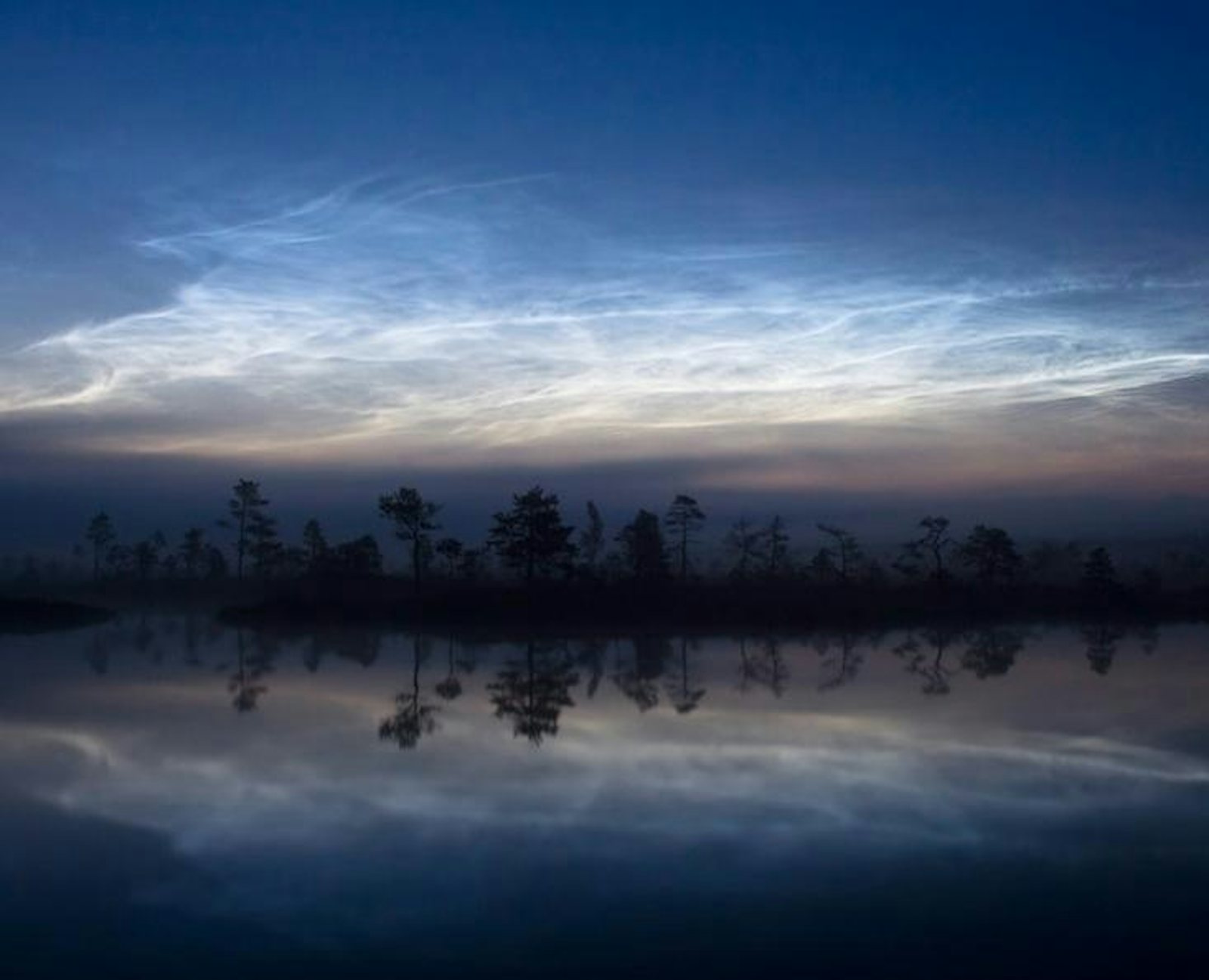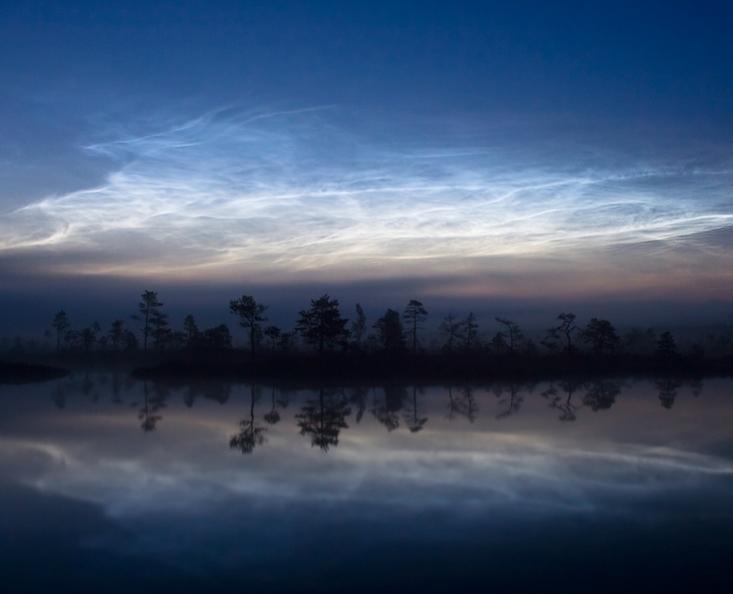If you look to the darkening sky after the end of a long summer day, you might see tendril-like clouds with a blueish tinge that hang at the edge of space. They appear when conditions are right, generally at latitudes close to the North or South Poles, and only when the Sun is invisible, over the horizon.
The discovery of “noctilucent,” or “night-shining,” clouds is credited to T.W. Backhouse, who, like many other people, took up sky-watching following the cataclysmic eruption of Indonesia’s Mount Krakatoa in 1883. The volcano spurt ash high into the atmosphere, creating spectacular sunsets worldwide. Backhouse, enthralled, kept watching the sky after those sunsets and noticed peculiar clouds shining iridescently. The volcanic ash eventually settled and the unusually beautiful sunsets faded, but the strange clouds persisted. Scientists are not sure what role, if any at all, volcanic ash played in the early sightings of these noctilucent clouds (NLCs), but they have studied them ever since. It wasn’t until recently, though, that they began to understand them.
Satellite measurements show that noctilucent clouds are made up of tiny ice crystals and form approximately 50 miles high, in the desolate upper part of the mesosphere. “Pressure [at this altitude] is extremely low, a hundred times less than what it is at the surface,” explains James Russell III, principal investigator for NASA’s satellite mission Aeronomy of Ice in the Mesosphere (AIM). “It is also a million times drier then it is in the Sahara desert.”
In those conditions, ice forms only when the air gets extremely cold—less than 150 Kelvin, or –190 degrees Fahrenheit. “The NLC region is actually the coldest place on Earth,” says Matthew Deland*, chief research scientist for Science Systems and Applications. Those low temperatures only occur at high mesosphere altitudes in the summer months near the poles. When the polar regions heat up during the summer, the relatively warm, wet air starts to rise. As it rises, it expands rapidly, and when it expands, it cools; it is the warming of the air in the lower atmosphere that, counterintuitively, produces the cold temperatures needed in the upper atmosphere.
As in any cloud, tiny particles are needed to help water vapor accumulate and grow into NLCs. Most clouds are “seeded” on particles like dust, but NASA discovered that NLCs form on meteoric smoke, the tiny, floating, remnants of meteors that burned up entering in the atmosphere. When water vapor encounters a smoke particle, it condenses, forming an ice crystal. The particles grow with more collisions, forming clumps of ice crystals, which we see as the blue, curtain-like clouds.
Noctilucent clouds shine at night because they form so high in the atmosphere. After the sun sets from the point of view of an observer on the surface, it still illuminates these clouds when it is six to 12 degrees below the horizon. The shining clouds appear blue-ish in color because the small ice particles scatter shorter wavelengths of light (blue) more strongly than the longer wavelengths (red).
As the warm air rises, it expands rapidly, and when it expands, it cools. It is the warming of the air in the lower atmosphere that produces the cold temperatures necessary.
On the other hand, the clouds are invisible during the day because they are too thin. NLCs’ optical depth is hundreds of times less than normal clouds, making them almost transparent during the day. “They are so faint that they can’t be seen against the bright daytime sky,” explained DeLand. The clouds can still be detected, day or night, using LIDAR (radar using lasers), or via satellites that can measure how much solar absorption or scattering.
Many researchers, including Russell, say that NLCs could be the “miner’s canary of global change.” Over the last 40 years, researchers have noticed changes in their occurrence, frequency, brightness, and location. NLCs have been spotted as far south at Colorado, Utah, and Nebraska, very far from their usual habitat near the North Pole.
Researchers theorize that two separate phenomena could be at work, creating NLC-favorable conditions more often. The first is increased carbon dioxide levels. At the surface, the build-up of carbon dioxide traps heat in, but computer models predict that at very high altitudes, more heat escapes into space, causing lower temperatures. The second is an increase in methane, which has become more abundant due to human activities, including the burning of fossil fuels, mining, and increasingly intensive agriculture. Methane rising to the upper mesosphere is destroyed by sunlight, releasing hydrogen atoms that react with oxygen to create water vapor.
“Changes in NLC behavior may indicate atmospheric changes that we can’t detect directly, similar to how a canary detect[ed] the buildup of dangerous gases in a mine before they could harm the miners,” says DeLand. However, more research is needed to see if this idea is right. NASA’s AIM mission will collect data from at least one full 11-year solar cycle to test the hypothesis. So far they are in their eighth year. Before the decade is out, we may learn if these unusual clouds are another indicator of how natural systems are changing in a world altered by humans.
Simone M. Scully is a science and culture journalist based in New York City and an editorial intern at Nautilus. Follow her on Twitter at @ScullySimone.































